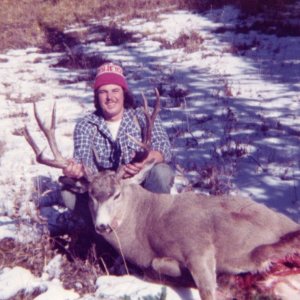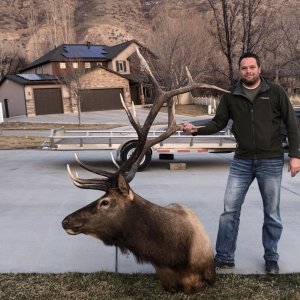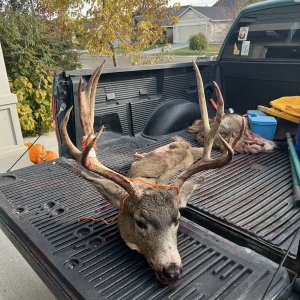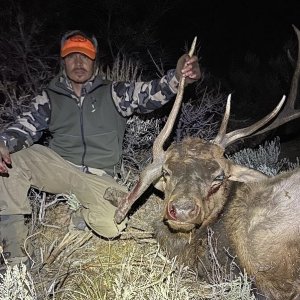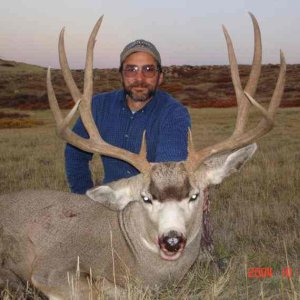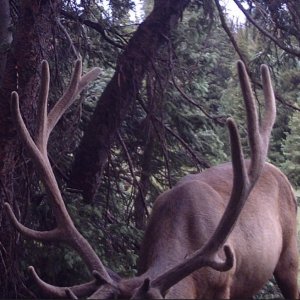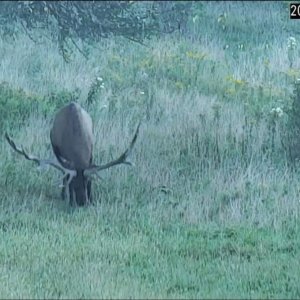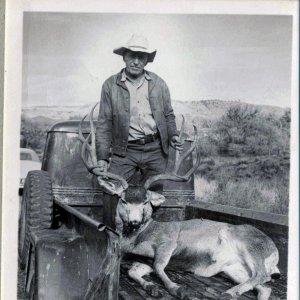The mule deer in Utah, especially in South Central Utah, took a huge hit from what the meteorologists called a “once in a century” flood in the late spring of 1983. Cased by extremely heavy snow, that stayed on both the summer range as well as the winter range, until nearly the first week of June. By the last week of June, Salt Lake City’s State Street and Main Streets were literally sandbagged three feet high and ranging rivers. Sevier County was a 7’ deep lake that was 6 miles wide and 21 miles long, from the town of Monroe to Salina. It took a month to empty. Over the next six years the South Central Utah sportsmen were screaming, day and night, over the loss of our mule deer. It was bad enough that we pushed the Fish & Game into hunting only three point or better bucks, to improve buck to doe ratios which were as low as two buck per hundred doe, on some ranges. They granted the antler restrictions and told sportsmen “there is more than one way to change the buck/doe ratio and they started killing does, at a rate of 6,000/8,000 per year, in South Central Utah per, until 1994.
In 1992/1993 another harsh winter hit Utah. The depth of snow wasn’t as deep nor did the melt come as late in the year but that year there was decent snow pack on the winter range which warmed up early in January and then Utah encounter 3 months of consistent bitter cold weather, that crusted the snow on the winter range over 6 to 8” deep. It stayed hard crusted over until last April. (By comparison we usually start greening up in early March). All over Utah, hundred/thousands of mule deer were dying in peoples yards, trying to find something to eat. Most, but not all hunters immediately recognized the loss. However thousands of young hunters, who weren’t as familiar with traditional mule deer populations….. as some of older guys where didn’t have the back ground to notice the loss and put up a tremendous out cry whenever reducing hunting tags was even considered. Some still are but, as I’ve watch their behavior the last year or two it seems as some of the more vocal, younger hunter, from say 10/12 years ago seem to be starting to worry, like we were 40 years ago. Funny what a little time and experience does to a person I guess.
My belief, for what that’s worth, is this, the loss of the predator poison 1080 in the 1950/1960 caused the coyote, cougar, bear, and eagle populations to slowly but surely increase. While the predator population may not have reached their range’s carrying capacity for coyote, cougar, bear, and eagle by 1982/83 it was getting close. It certain is at it’s carrying capacity now. Combine the increasing loss to predators, the unnoticed loss of mule deer to loss to the unrecognized winter kill in the spring of 1983, and the 6,000/8,000 antlerless doe tags, every year between 1985 and 1993, WE put the Utah mule deer population at “a tipping point”.
The bitter cold snow crusted winter in 1992/93 was the push that tipped it over, and forced the mule deer population to fall below its ability out produce it’s mortality rates.
Prior to 1993, Fish and Game data reports show fawn survival rates were consistently above 75 per 100 doe, spring count, in most units. They are rarely over 50/60 per 100 now and they have been that low for nearly 30 years. (A 50/60% fawn survival rate will never, under current environment/social conditions to create a surplus population.). And they have and will continue to stay that way because of the 50 plus reason that elkassassin is constantly referring to. And it’s those 50 plus reasons that elkassassin claims have to be changed “simultaneously” or nothing will change for our mule deer populations. I have come to believe he is absolutely correct and I can not see any possible way it can or will ever happen simultaneously.
Once it tipped, there is no way it can tip back.
I hope I’m wrong……. If anyone thinks it can, I would be delighted to hear their rational for thinking it can or will.

